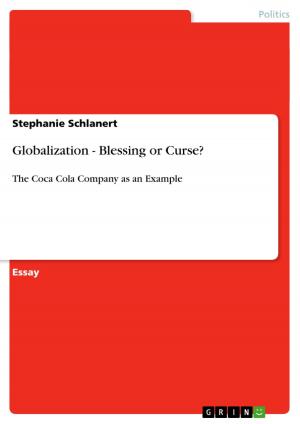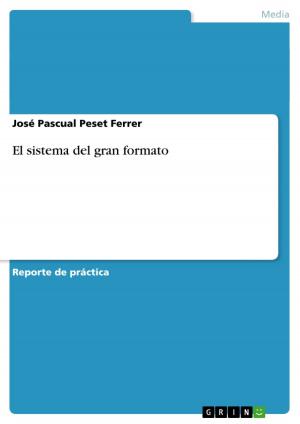| Author: | Andra Stefanescu | ISBN: | 9783638054690 |
| Publisher: | GRIN Publishing | Publication: | May 28, 2008 |
| Imprint: | GRIN Publishing | Language: | English |
| Author: | Andra Stefanescu |
| ISBN: | 9783638054690 |
| Publisher: | GRIN Publishing |
| Publication: | May 28, 2008 |
| Imprint: | GRIN Publishing |
| Language: | English |
Diploma Thesis from the year 2007 in the subject English Language and Literature Studies - Linguistics, grade: 1, University of Bucharest (Faculty of Foreign Languages and Literatures), 45 entries in the bibliography, language: English, abstract: Modality is a semantic concept that covers notions such as possibility, probability, permission, ability, volition, necessity and obligation. The class of modals is in many languages both syntactically and semantically highly irregular and unpredictable: modals frequently have idiosyncratic conjugational patterns and are subject to highly specialized syntactic rules. One of the main characteristic of modal verbs is their relatively imprecise and indeterminate meaning, their ambiguity: the same modal can be deontic (i.e. based on rules and regulations), but it may also involve processes, sets of knowledge or belief systems, and thus get an epistemic interpretation. In order to define the class of modals or to provide a set of environments in which a modal may be correctly or appropriately used, one must refer to many levels of language: the purely syntactic environment, as well as the logical structure, the context of the utterance, the assumptions that are shared by the speaker and the addressee, the social situation assumed by the participants in the discourse, the impression the speaker wants to make on the addressee, and so on. There is also the question of the appropriate context environments, that is, the semantic-pragmatic issue. Therefore, a complete analysis of a particular modal can only be achieved by looking both at its syntactic features and at its semantic structure; in other words, the syntax of a modal verb is based on its semantics, and these two dimensions are inseparable.
Diploma Thesis from the year 2007 in the subject English Language and Literature Studies - Linguistics, grade: 1, University of Bucharest (Faculty of Foreign Languages and Literatures), 45 entries in the bibliography, language: English, abstract: Modality is a semantic concept that covers notions such as possibility, probability, permission, ability, volition, necessity and obligation. The class of modals is in many languages both syntactically and semantically highly irregular and unpredictable: modals frequently have idiosyncratic conjugational patterns and are subject to highly specialized syntactic rules. One of the main characteristic of modal verbs is their relatively imprecise and indeterminate meaning, their ambiguity: the same modal can be deontic (i.e. based on rules and regulations), but it may also involve processes, sets of knowledge or belief systems, and thus get an epistemic interpretation. In order to define the class of modals or to provide a set of environments in which a modal may be correctly or appropriately used, one must refer to many levels of language: the purely syntactic environment, as well as the logical structure, the context of the utterance, the assumptions that are shared by the speaker and the addressee, the social situation assumed by the participants in the discourse, the impression the speaker wants to make on the addressee, and so on. There is also the question of the appropriate context environments, that is, the semantic-pragmatic issue. Therefore, a complete analysis of a particular modal can only be achieved by looking both at its syntactic features and at its semantic structure; in other words, the syntax of a modal verb is based on its semantics, and these two dimensions are inseparable.















